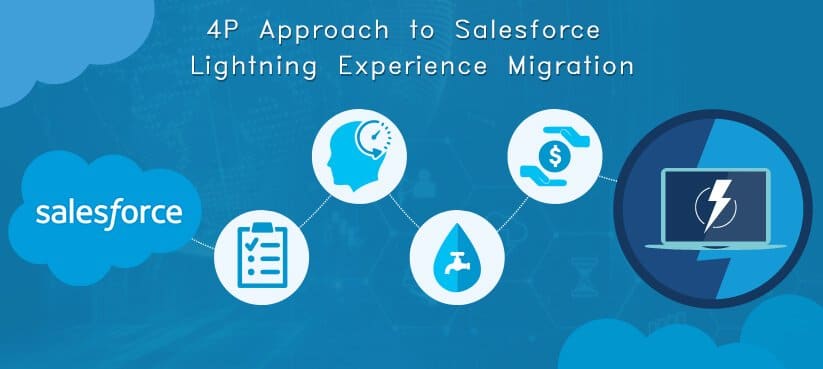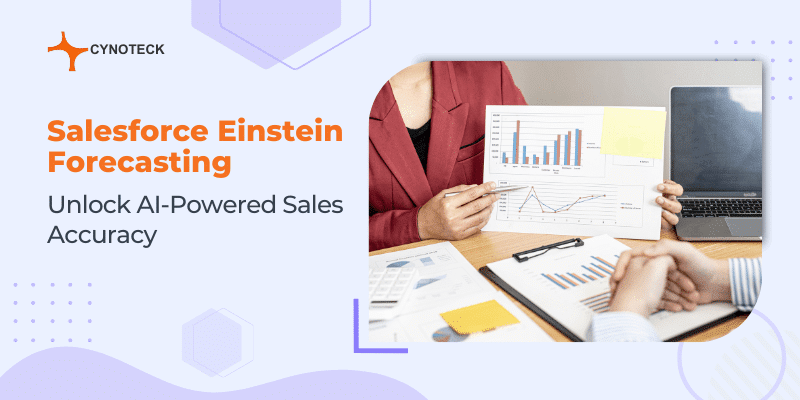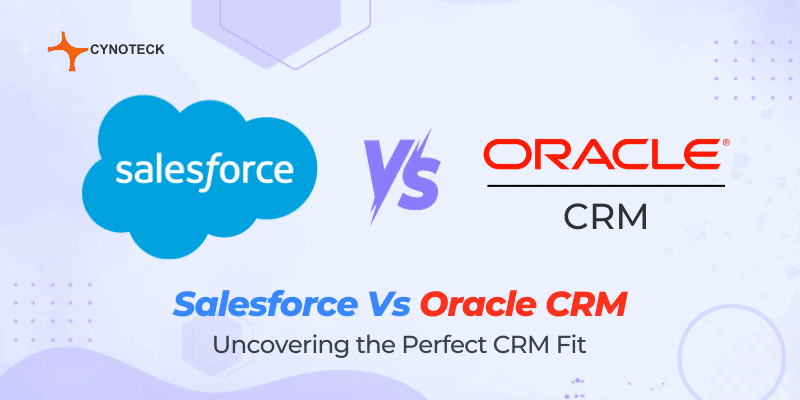If you are reading this article, you are probably already planning to migrate your Salesforce instance to Lightning Experience or considering it. Either way, this article should help identify appropriate activities and help provide a checklist of things to expect and plan for.
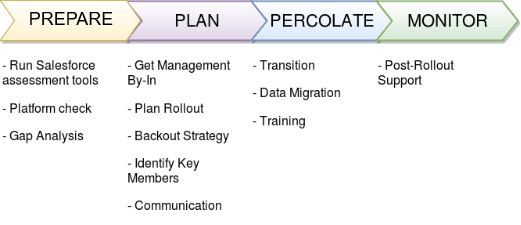
1. PREPARE
(a). Run Salesforce assessment tools
Lightning Experience Migration Assistant:
Lightning Experience Migration Assistant is a very useful tool provided by Salesforce. All you have to do is, to trigger this tool to review your instance’s configurations/ customizations and feature usage to ascertain possible issues in Lightning Experience migration. So, use this tool and review its report to identify key work areas.
For more details refer: https://help.salesforce.com/articleView?id=lex_migration_assistant.htm&type=5
Salesforce Optimizer
Another fantastic feature from Salesforce called “Org. Optimizer” can be very helpful. Although, it’s not mandatory, it checks the health of your salesforce instance which can help identify some work areas which you may want to iron out before migration to Lightning Experience.
For instance, it can help identify features seldom used, which can help prioritize migration activities.
For more details refer: https://help.salesforce.com/articleView?id=optimizer_introduction.htm&type=0
(b). Platform check
This step can often be missed, but is very important, especially for medium and large enterprises. A lot of medium/ large enterprises have Internet Explorer mandated as a browser of choice, by their IT.
Unfortunately, Salesforce lightning experience does not support IE. So, before making any switch, do review your IT policies. It would be helpful to understand platform limitations and constraints before moving ahead.
Note:- Organizations that opted for IE extended support for Lightning experience can still use Lightning Experience with IE. However, some of the features/ functionalities may not work.
For information on Salesforce Lightning Experience supported browsers refer: https://help.salesforce.com/articleView?id=getstart_browsers_sfx.htm&type=5
(c). Gap Analysis
Now, having run both the tools and identified the high-level assessment of your salesforce instance, it’s time for some deep dive. Identify all features/ functionalities within your current Salesforce Org.
- Bring in Superusers and brief them on Lightning Experience
- Perform a quick test run of features as-is in Lightning Experience
- Identify feature parity and work areas
(d). Pilot Runs
A fast and dirty approach will be to just allow some power to switch to Salesforce Lightning Experience and try to perform their daily functions. This will give a quick and fast analysis of what works and what doesn’t.
With this, you can also get their viewpoints on some new features that are available within Lightning Experience only for e.g. Improved calendar, Kanban view, Lightning console, etc.
Also, Read: Salesforce Lightning Web Components – lean user interface development
2. PLAN
(a). Get Management Buy-In
Regardless of any initiative, it’s almost inevitable to get blessings from senior management. More so, in this case, as you are probably changing the entire user experience of a critical aspect of your organization’s CRM.
It would be helpful to align Lightning Experience migration to corporate targets to ensure Leadership views it as a necessary (and justified) migration, instead of just some beautification effort.
Not to forget, every change has its own share of friction. Favorable support from senior leadership will not just help get the budget but also required support for carrying on with the program successfully.
(b). Plan Rollout
Now, with the three reports in your hand (listed below), you have pretty much all the data you need.
- Gap analysis findings
- Lightning readiness migration assistant report
- Salesforce Optimizer report
Identify your Rollout strategy. Plan out for each business unit, team, or business function.
Phased rollout
Perhaps the most obvious choice for Lightning experience migration is to divide rollout into multiple phases. Phases can be based on team/ business unit or business function.
This helps in ensuring careful guided rollouts and the ability to handle any post-migration issues in a smoother fashion. Quite certainly, learnings from a rollout can be incorporated within the next rollout and whole processes can be smoothened along the way.
Full Rollout
Although it’s quite beneficial to perform migration in phases, there are certain scenarios where a full rollout is required. This can still be achieved but needs meticulous planning and rigorous testing.
A good approach for a rollout plan is to have a defined step-wise approach for migration, just like any application development cycle. First have a rollout performed in the sandbox, have users verify it, and then apply changes to production.
In the case of a Phased rollout, modify the migration plan based on findings from a rollout and repeat rollout for each phase.
Also, Road: 7 Outstanding Ways to Use Salesforce for Customer Retention
(c). Back-out Strategy
Salesforce’s ability to allow users to switch between Lightning Experience and Salesforce Classic helps here. As a back-out strategy, it would be advisable to keep existing things as-is, to ensure that they can run parallel to the Lightning Experience.
Hence, in case of any adverse scenario, users can be asked to switch back to Salesforce classic, thereby minimizing business risk.
(d). Identify Key Members
A big aspect of the success of any change program lies in the inclusion of the right team members. Lightning experience migration to needs appropriate user engagement. So, it is highly advisable to form the right team for the job.
(e). In-house vs Outsourcing
This is a well-debated topic, whether to manage the migration activities in-house or hire an external vendor. It’s not one size fits all solution and must be dealt with accordingly.
As per our analysis, most businesses do not have adequate Salesforce trained and experienced professionals to lead this kind of activity, skewing the decision towards outsourcing.
However, the organization having the right team or planning to the up-skill team can consider engaging the internal team to handle all or some of the activities.
Undoubtedly, bringing in someone who’s working on the Salesforce platform day in-out would be helpful to avoid common pitfalls and leverage industry best practices.
(f). Communication
As part of any good change management plan, create a communication plan to share details of migration to appropriate stakeholders. In the case of a large team, multiple rounds of communication may be required.
It is very helpful to prepare a communication plan, in advance. It helps in staying ahead of the curve and reach out to appropriate stakeholders.
These communications can also contain small nuggets of information highlighting new ways of doing things, benefits, etc. which can bring much-needed excitement.
3. PERCOLATE
(a). Transition
A critical part of Lightning experience migration is to migrate non-supported functionalities to Lightning Experience. Following are some features/ functionalities (not an exhaustive list) which need special attention, along with suggestive action(s).
| Scenario | Action |
| Use JavaScript button on page layout | Recreate |
| Visualforce pages with basic functionality | Reuse |
| Visualforce page using complex JavaScript or heavy data processing | Recreate |
| Reports | Reuse |
| Dashboards | Reuse/ Re-create |
| Apex Classes/ Triggers | Reuse |
| Apex Controllers | Reuse/ Re-create |
(b). Reuse
It may be a surprise to few, but Visualforce pages can still be used within Lightning Experience. There are some restrictions that may prohibit a page to function properly.
So, the first approach should definitely be to reuse the pages, which are compliant with Lightning standards and are functional within Lightning Experience.
There are some other areas which may need attention:
- If you use Visualforce pages for generating PDF
- Uses third-party UI frameworks
- Uses iFrames
- Uses JavaScript with calls to the window object
(c). Re-create
Lastly, there can be some screens/ functionalities which would be better off converted to Lightning components. Some typical scenarios can be data-intensive screens that require heavy dynamic data refreshes.
That’s where lightning components have a clear win over Visualforce pages (unless of course, you are not using a JS-based client library like Angular, React, VueJS, etc.)
(d). Data migration
With Salesforce Lightning Experience, Salesforce has not just migrated the user interface to the new Lightning layer. But, some of the existing features have been redesigned (mostly for the better).
For instance, Attachments and Documents are now moved to Files, this provides rich file capabilities to previously limited attachments and documents functionality. Similarly, Salesforce Knowledge is transformed into Lightning Knowledge.
So, as part of the Lightning migration, the following data migration activities should also be considered
- Attachments to Files (not mandatory, but suggested)
- Documents to Files (mandatory, no support of documents in lightning experience)
- Salesforce Knowledge to Lightning Knowledge
- Notes (old) to new Notes features
Also, Read: The Complete Guide to Salesforce Data Loader
(e). Training
We need to realize that there is a special emphasis to “Experience” within Salesforce Lightning Experience. Lightning Experience changes the way a lot of things were done in Salesforce Classic and adds a lot of new capabilities.
Not to miss, there are some features which are yet not available. So, do plan for good hands-on training for the end-users. A key aspect of user adoption in such scenarios is user perception or change. It would be even beneficial to have some incentive-driven training.
4. PRESERVE
(a). Post-Rollout Support
With all the steps followed so far, there are still possibilities of things not working as expected. So, prepare for a post-rollout support phase.
There can be myriads of reasons for these issues and must be dealt with accordingly. A few key issues can be related to:
- Navigation and Look & Feel
- Un-supported functionality
- Salesforce updates
There is no one good solution to address these challenges. One of the most recommended approaches for such issues is to form an ongoing activity to review these issues.
Form a dedicated team to own these responsibilities. This will help in identifying these issues before they cause much damage.
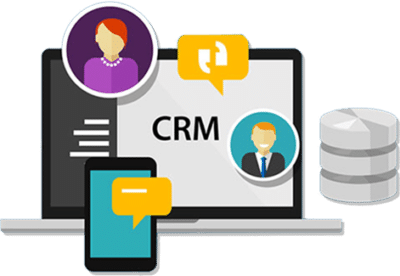
Salesforce Consulting Services
If you are new to automation and confused about Workflow or Process Builder. Need not to worry, we have got you all covered. Talk to our experts and clear all the cloudy thoughts about automation.

